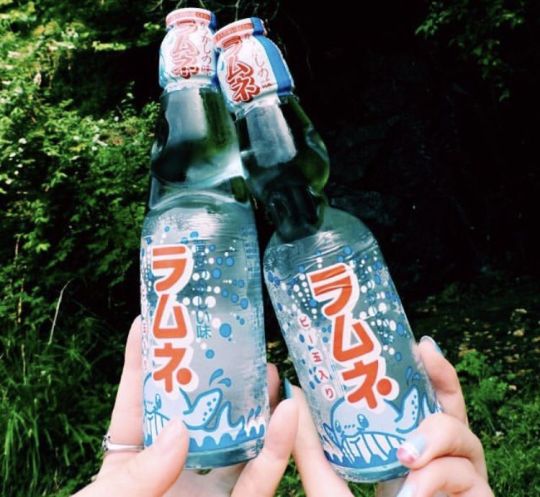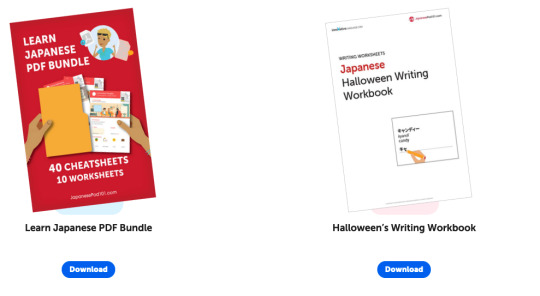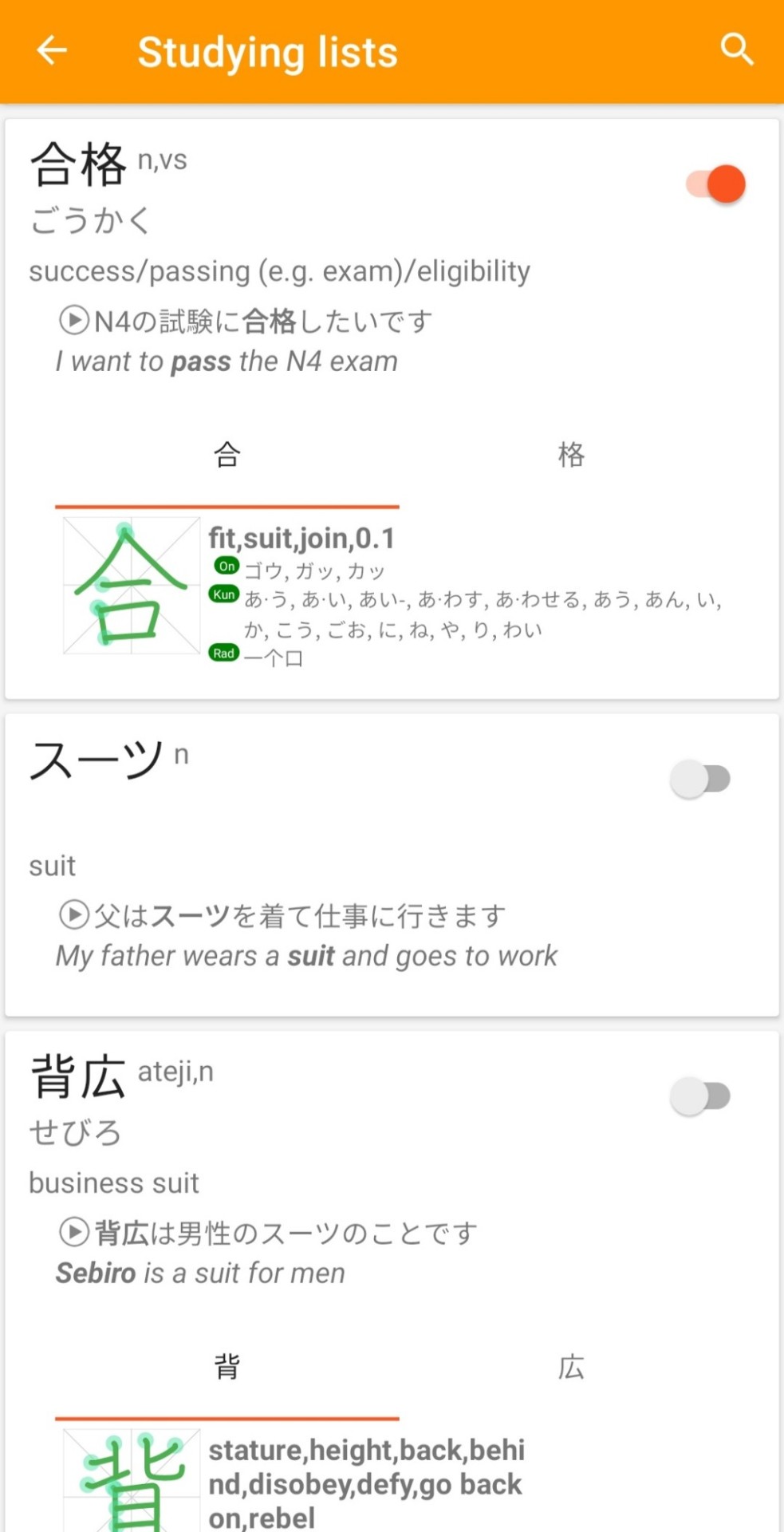#japanese resources
Explore tagged Tumblr posts
Text
Found a new language practice app!
Polygloss has you describe an image in your target language so another player can guess it. It encourages creative answers. The game works for people of all levels — you can describe simple pictures or try your hand at wordplay.

It has plenty of options and will let you add any language you’d like — tho it’ll probably be more difficult to find people to play with.
#language learning tips#Quinn posts#language resources#Japanese resources#Spanish resources#language#langblr#language learning#100#500
1K notes
·
View notes
Text
YouTube Channels for Kids by JLPT Levels
(。•̀ᴗ-)✧ resources

こんにちは, Japanese learners! Learning a language is an exciting adventure, isn't it? To add a spark of joy to your Japanese learning journey, here's a collection of YouTube channels tailored for kids. Organized by JLPT levels, these channels offer a blend of education and entertainment for learners at different stages. Keep in mind, though, that JLPT levels aren't an exact science like math – language learning can be subjective in terms of difficulty. However, these resources provide a fantastic starting point and a fun way to explore the world of Japanese language and culture. Let's hop into this delightful world of animated learning and playful discoveries!
Friendly reminder to adjust your way of learning in order to make the most of what you're studying to reach the goal you truly want! read my post about it (ᵔ◡ᵔ)
꒰ა ˚₊ ✧・┈・╴N 5 ╴・┈・𐑺 ‧₊˚໒꒱
— Curious George (N5 level)
— Japanese folk tales/anime series (Japanese audio/Japanese subtitles) from BomBom Academy (N5 level)
— Peppa Pig (N5-4 level)
— Anpanman (N5-4 level)
— NHK education (N5-4 level)
꒰ა ˚₊ ✧・┈・╴N4 ╴・┈・𐑺 ‧₊˚໒꒱
— Cinnamon Roll, Sanrio (N4 level)
— [Anime] Atashin'chi (N4-3 level)
꒰ა ˚₊ ✧・┈・╴N3 ╴・┈・𐑺 ‧₊˚໒꒱
— Sesame Street Japan (N3 level)
— Chibi Maruko Chan (N3-2 level)
꒰ა ˚₊ ✧・┈・╴N2 ╴・┈・𐑺 ‧₊˚໒꒱
— Precure (N2 level)
またね~@inkichan
꒰ა ˚₊ ✧・┈・╴﹕꒰ ᐢ。- ༝ -。ᐢ ꒱﹕╴・┈・𐑺 ‧₊˚໒꒱
#japanese#nihongo#studyblr#learn Japanese#learning Japanese#japanese langblr#langblog#japanese studyblr#日本語#study japanese#japanese resources#free resources#resources#japanese free resources#youtube#JLPT#JLPT N5
778 notes
·
View notes
Text
Japanese activities by grammar points
So... I made these for myself last month by assembling exercises from different textbooks. They're about really basic stuff cause I'm just getting started, but I thought they may be of help to someone else and wanted to share! <3
Causative
Causative-passive
Conditional forms (ば-conditional,��-たら, なら)
Passive
Potential
ので、のに
のです / んだ
Some of them also include an explanation from the book "A Handbook of Japanese Grammar Patterns for Teachers and Learners" (it's wonderful, i really recommend it!).
133 notes
·
View notes
Text
🎏Immersion, its quirks, and tips for language learning this way!


its the 5th of May, so happy children's day! 🎏 I got a question in one of my posts asking for some advice on immersion learning! i thought it would be a good opportunity to talk about immersion in general, my current study(?) routine and perhaps give some useful advice! As the name suggests, Immersion language learning is done primarily by consuming media in your target language. Immersion can seem super intimidating to us learners, mostly cause we can't understand most of the stuff available to us. But! its not impossible to start out using immersion right out of the gate. i think people tend to get scared or go "I'll immerse when i get better at my TL!" But the truth of the matter is, your not going to get used to, or better at your target language unless you consume actual content. (in my opinion.)
Honestly, a lot of immersion learning is being able to tolerate that i probably wont understand everything right away. I will someday, but for now i have to be comfortable with not understanding a lot. which is okay! So, what is my current study routine?
right now, my routine consists of:
doing vocabulary cards on Anki from a premade anki deck.
playing about an hour of Animal crossing everyday
watching 1 - 3 episodes of an anime
watching Youtube videos
weekly (ish) grammar done by reading Imabi, and watching Cure Dolly videos on Youtube.
The bread and butter of my routine is learning vocab, and occasional grammar studies. I'm using the core2k/6k deck. which as the name implies, is an optimized vocab deck that contains the most common 6k JP vocabulary. i currently take 5 new vocab cards a day, and try to get my reviews in everyday. my anki deck has contributed a lot to me being able to immerse so early in my language journey. learning and then reviewing new words everyday lets me recognize words in my immersion. As time has gone on, i can recognize more and more words, and even some words I haven't encountered yet in my deck. Immersion, while still uncomfortable, (especially with complex media) is the other side of the coin. i try to spend double the time i spend on anki, immersing. Mostly because i enjoy what I'm immersing in, but also because i get more out of it the more time i spend immersing.
"that's all well and good Lucky, but what advice would you give to someone who wants to learn this way?"
Well! first of all, and this is very important:
Be comfortable with ambiguity. you may not be able to understand some, or maybe most of the thing you are immersing in. that's okay! Your brain is already looking for patterns to see in your TL, and is growing more accustomed to it. I got a lot of headaches in the beginning, i still do actually. but i know that's my brain working hard! (take a break if you get a headache!!)
Second, and probably just as important:
Follow your interests. make immersion fun! whats the point of immersing if its torturous?! I'm a lot more likely to continue immersing in something if i actually enjoy it. there are a lot of easier anime to immerse in, but if I'm not having fun, I'm not going to learn anything. you should do the same! even if its too difficult to understand. I'm currently watching someone on YouTube play a dating sim, and even though its waaaay above my skill level, I'm really enjoying myself watching it! I've even recognized some words i know. whole sentences, even.
Third:
Be Consistent! This is probably advice you've already heard, but it bears repeating! even if you do something small like listening to a song in your TL, that's immersion babyy :) consistency is key, above all.
Lastly: Track your Immersion. a problem with immersion is it can feel like you are going nowhere. tracking how much time you spend doing an activity, (watching videos, reading, etc) is a great way to make immersion more tangible. lots of people reccomend toggl, but i personally use polylogger. its built with language learners in mind, and is stupidly easy to use. i also keep personal logs in an online diary, as well as here on my blog to measure my progress. it helps!
alright, i think thats everything i have to say for now! if you've made it to the end of this long post, hello! and thank you <3 hope you've had a good day so far! I will leave you with some links to more reading on the subject under the cut, they go into more detail than i have here.
take care for now! またね!
this article by Refold about tolerating ambiguity:
The Moe ways guide to immersion:
Making the leap to Immersion, Video by Cure Dolly:
youtube
#lukrio chats#language learning#japanese langblr#langblr#studyblr#japanese resources#japanese language#learning japanese#japanese studyblr#language blog#language advice#learning tips#language resources#linguistics#language#please go ahead and msg me if youd like to talk about it more! i still have a fair amount of resources stashed away#long post#sorry this turned into a mini essay#i think i tend to over share a bit#sorry if this is a slog lmao#i truly believe in this method#BUT i will say immersion can blow a lot at the beginning#it can be frustrating and exhausting#and it can feel like you are going nowhere.#but i think if i can do it#adhd squirrel brain and all#you can too <3
106 notes
·
View notes
Text
AI: Friend or Foe? | Vocab
Hi friends! I've been trying to broaden my horizons by reading Japanese news articles about topics I wouldn't typically read or talk about in Japanese as an attempt to learn new words.

Today, I read Hiragana Times' article entitled "Are robots enemies or friends of humans?" It was a brief article that mentioned how in the West we view A.I. and robots as a sign of impending dystopia and we have media like the Terminator and the Matrix that show us at odds with A.I., while Japan views them as friends/helpers and have media like Astro Boy and Doraemon that depict them as being helpful. Do you think this is true? I find that a lot of nuance is lacking from the article, but I wonder if this is because the magazine is intended for Japanese-learning foreigners, so they may cut down on things in order to make the translations appear less intimidating. One of the cool things about Hiragana Times is that it's entirely bilingual!
Here are some of the vocab words I picked up:
人工知能 [じんこうちのう] artifical intelligence (A.I.)
搭載 [とうさい] being equipped with
親しむ [したしむ] to be intimate with; to befriend
受け入れる [うけいれる] to accept; to receive; to agree
一方 [いっぽう] on the one hand; on the other hand; meanwhile
欧米 [おうべい] the West; Europe and America
象��� [しょうちょう] symbol (of something abstract); (symbolic) representation
見なす [みなす] to regard (as); to consider (to be); to deem; to look upon (as)
業務 [ぎょうむ] task; actions; affairs; duties
効率化 [こうりつか] making efficient; optimization
貢献 [こうけん] contribution (furthering a goal or cause); services (to a cause)
懸念 [けねん] worry; fear; anxiety; concern
根強い [ねづよい] firmly rooted; deep-seated
#for the record i hate the way that america is implementing a.i.#it should not be used to steal anything and yet it does#vocab#japanese#learn japanese#resources#study resources#japanese resources#learning through reading#learning through immersion#reading in japanese#japanese news#japan
32 notes
·
View notes
Text
Notes on ひらがな 📚✨️

Disclaimer: I haven't been posting a lot lately (life's been hectic) so I decided to start sharing some of my notes. These were taken a while back, based on Tae Kim's grammar guide.
Japanese consists of two phonetic scripts (Hiragana and Katakana, referred to as kana), with a little less than 50 characters each. Today we'll study Hiragana!
Hiragana (ひらがな) is used for a couple of reasons:
• Grammatical purposes;
• Words with really difficult/rare Kanji;
• Colloquial expressions;
• Onomatopoeias;
• Or by beginner students and children, in place of unfamiliar Kanji;
Every character in Hiragana corresponds to a [vowel] or [consonant + vowel] syllable sound, with the exception of [ん].
When practicing by hand, it's extremely important to remember that stroke order and the direction of strokes matter a lot! You don’t want to end up with the writing skills of a clumsy toddler.
(the chart bellow has hiragana and katakana btw, the hiragana characters are on the left side)

source: r/japaneseresources on reddit
Thought learning all the characters was hard enough? Fear not, there's additional sounds for you to learn.
📚 The Muddied Sounds 📚
There are five more consonant sounds that are written by affixing two tiny lines (dakuten) or a tiny circle (handakuten) to a character. This creates a less clipped version of the consonants, as you can see bellow:

source: japanistry.com
📚 The Small [や], [ゆ] and [よ] 📚
We can combine a consonant with a / ya / yu / yo sound by attaching a small [や], [ゆ] or [よ] to the /i/ vowel character of each consonant.

source: guidetojapanese.org
📚 The Small [つ] 📚
A small [つ] is inserted between characters to carry the consonant sound of the second character to the end of the first.
Note that when you encounter a small [つ] between characters, there's almost always a clipping sound to the pronounciation! You gotta make sure to clip the right consonant (the consonant of the second character).
Example: ざっし (zas-shi / magazine)
📚 The Long Vowel Sound 📚
You can extend the vowel sound of a character by adding [あ], [い] or [う] to them. See the chart bellow:

source: guidetojapanese.org
Example: to create a extended vowel sound from [か], we add a [あ] to create [かあ].
Remember to actually hold your vowels long enough, or you'll end up saying stuff like [ここ - here] instead of [こうこう - highschool].
Lastly, there are a few exceptions where and /e/ vowel is extended by adding [え] or and /o/ vowel is extended by adding [お], but those are few and far between, so pay attention but don't worry too much about it.
Example: おねえさん (older sister)
See you next time! 💌
#laura learns#laura studies#japanese langblr#japanese#japanese notes#hiragana#studyblr#student life#study blog#studyinspo#langblr#learning japanese#japanese learning#japanese studies#japanese resources
45 notes
·
View notes
Text
Comprehensible Input Japanese Materials, and Beginner Listening Materials:
Comprehensible Japanese: https://youtube.com/@cijapanese
Nihongo Con Teppei (i recommend all the stuff this guy made):
Comprehensible Input Wiki has a Japanese list of resources, i really recommend this page for finding more resources (and pages for other languages too):
DruDru's Main Experiment (he wrote the beginning of what a comprehensible input text resource could look like for japanese, be aware it is being proofread by a native speaker and the beginning has been edited but not all of the newer chapters, my biggest interest in this project is how YES comprehensible input/learner textooks WOULD WORK with languages like japanese, with a little work put in to add more pictures):
Sakura Tadoku Lab (free graded reader stories):
Free Tadoku Books (I have read ALL of these and 1 highly recommend you start reading them now, even if youre a beginner, because if you are scared of reading then these really help you push through the initial hurdle of being afraid to try. After these books, I was feeling brave enough to try reading japanese books in Kindle. I'd personally recommend Satori Reader app as the next step as you get intermediate, the app is paid so I'm using it on and off and waiting for time to use it intensely, but Satori Reader has excellent upper beginner and intermediate reading materials with extensive translations/grammar explanations/recorded audio that make learning to read something with a lot of resources to ensure you can check if youre understanding):
I also just highly recommend youtube channels in general, youtube automated CC does a decent enough job with japanese that you can turn on CC on japanese lets plays of games (like video games you played before and know the plot of), or learning resources in japanese (and read along as you listen if you want listening practice). If you find japanese audiobooks or podcasts on youtube, you can again use CC for a transcript or text if you'd like to read too.
#reference#resources#japanese resources#japanese#japanese comprehensible input#comprehensible input#comprehensible input resources
27 notes
·
View notes
Text
what are your guys thoughts on learning multiple languages at one time? I am nearing A2 level in Spanish, and want to add back on Japanese and eventually Korean, Italian, Madarin, etc. Right now however, I want to add on Japanese, I’m at least thinking about it. What are your thoughts on two languages at a time?
** I did self study Japanese for around two/three years before switching to only focusing on Spanish. So I’d be relearning the basics and moving on from there. I own the Genki I and Genki II textbooks and workbooks currently.
#college student#college studyblr#foreign languages#it girl#langblr#language goals#language learning#language resources#language studyblr#spanish#spanish langblr#langblr community#japanese langblr#language learning goals#languageblr#japanese language#language learning tips#language#learn spanish#langblog#studyblr#study blog#studying#spanish studyblr#japanese studyblr#learn japanese#spanish language#japanese resources#japanese study#study community
19 notes
·
View notes
Text

Free Character Writing and Practice Sheet PDF for Korean, Japanese, Chinese | Digital Download for Language Learning
This is a character writing & practice sheet set for languages like Korean, Japanese and Chinese. As a Korean learner myself, using sheets like these help me prepare for the TOPIK exam, and I decided to make some and share them with all! For free!
Language learning is a fun process and it becomes even more fun as you progress. I wish you the best luck on your language learning journey!
🔗 Link: https://peachystudiosco.gumroad.com/l/character-writing-sheet
#langblr#languages#korean#japanese#chinese#mandarin#cantonese#kanji#hanja#japanese resources#language learning#language resources#korean resources#chinese resources#free resources#printables#free printables#topik#jlpt#hsk#writing practice#foreign language
16 notes
·
View notes
Text
Been practicing reading!
The full NHK articles are pretty nice, I'd definitely recommend it for N2 learners.
You can also check out Yomitan. It's a cursor dictionary that helps out a lot.

Some easier recourses I recommend for reading practice:
1. NHK Easy News
2. Todaii
3. Yomu Yomu
4. Tadoku
#japanese#japanese language#jlpt#jlpt n2#languages#studyblr#studying#japanese books#language learning#study with me#japanese resources
12 notes
·
View notes
Text
If you've started learning Japanese, either self taught or in a course, Genki was probably recommended to you. But what if you don't have the money to buy the book? I sure don't. Fear not, this Reddit thread has got you covered (with more resources like the Remembering the Kanji by James Heisig).
Genki I & II PDF + Audio Lessons (Reddit Thread)
NOTE: It's come to my attention that the original post has been deleted; this is not what you're looking for. The actual book and its other resources are in the REPLIES. The Google Drive and its files are also safe! I tested it and it's 100% safe to download. Be careful when downloading things from reddit threads.
Other Resources
#japanese langblr#learning japanese#self taught langblr#japanese immersion#japanese language#langblr#japanese resources
41 notes
·
View notes
Text

50+ Japanese PDF Cheat Sheet/Workbook Bundle Giveaway
As the title says....
JapanesePod101 is doing a PDF resource giveaway for Halloween — with 50+ Japanese conversation cheat sheets plus workbooks until October 31st. You'll need a free account. After you sign up, return to that page to get the free bundle.
get it here: https://www.JapanesePod101.com/halloween
24 notes
·
View notes
Text
いろどり · irodori - Japanese for life in Japan
(。•̀ᴗ-)✧ resources

IRODORI is a useful website made by The Japan Foundation. It is a series of 3 textbooks, with audios and materials completely free, focusing on developing skills useful for life in Japan.
Whether you are planning to come to Japan in the future and want to learn what you should be able to do before you arrive, or whether you are already living in Japan and wish to check your Japanese ability and increase the number of things you can do, we sincerely hope that this textbook will help you achieve your goals. - "what is irodori" website page.
The textbooks are super organized, divided in: starter (A1), elementary 1 and elementary 2. Finishing elementary 2 means having an A2 level [At A2 level, you can hold short, basic everyday conversations on familiar topics.]
I recommend styling your learning method with the goal you have in mind. You can understand more about it reading the post I made.
Hope it was helpful! Let me know and let's share resources~
またね~@inkichan
꒰ა ˚₊ ✧・┈・╴﹕꒰ ᐢ。- ༝ -。ᐢ ꒱﹕╴・┈・𐑺 ‧₊˚໒꒱
#japanese#nihongo#studyblr#japanese langblr#langblog#japanese studyblr#日本語#resources#japanese resources#free resources#japanese free resources#textbook#free#free textbooks#pdf#japanese pdf#learn japanese#learning japanese
840 notes
·
View notes
Note
Hello!!
I just wanted to say i really like your blog and i was wondering what resources you use to study japanese 🌸
i recently started learning it and i only know hiragana and katakana but I'm definitely not an expert on good textbooks/resources..
thank you so much!! i hope you have a lovely day 🥰
Hello!! Aww thank you so much🩷
For book, I recommend to use Genki textbook and workbook as they almost cover all you need to know as a beginner, from grammar, vocabulary, and kanji. Genki workbook is also great to practice kana/kanji writing too.
For other resources I use Kanji Senpai and Jump+ Manga to practice my Japanese. I've been using Kanji Senpai for years because it's easy to use and it helps you improve your writing. As for Jump+, it's an app where you can read Japanese manga (free and paid).
For dictionary I use Jsho (in app) and jisho.org (for web)
I hope it helps^^ good luck on your study and have a nice day too🩷


15 notes
·
View notes
Text
Found this channel last week and the vlogs are very comfy. Kuhaku unfortunately doesn't talk in the videos but the captions make for a great reading practice nonetheless.
5 notes
·
View notes
Text

There's a YouTube channel titled Nobuyoshi Takeuchi that has a ton of the Japanese versions of Disney songs. It's got all the classics and, best of all, they have the lyrics in Japanese, too! As a Disney fam studying the language this made me very happy.


3 notes
·
View notes